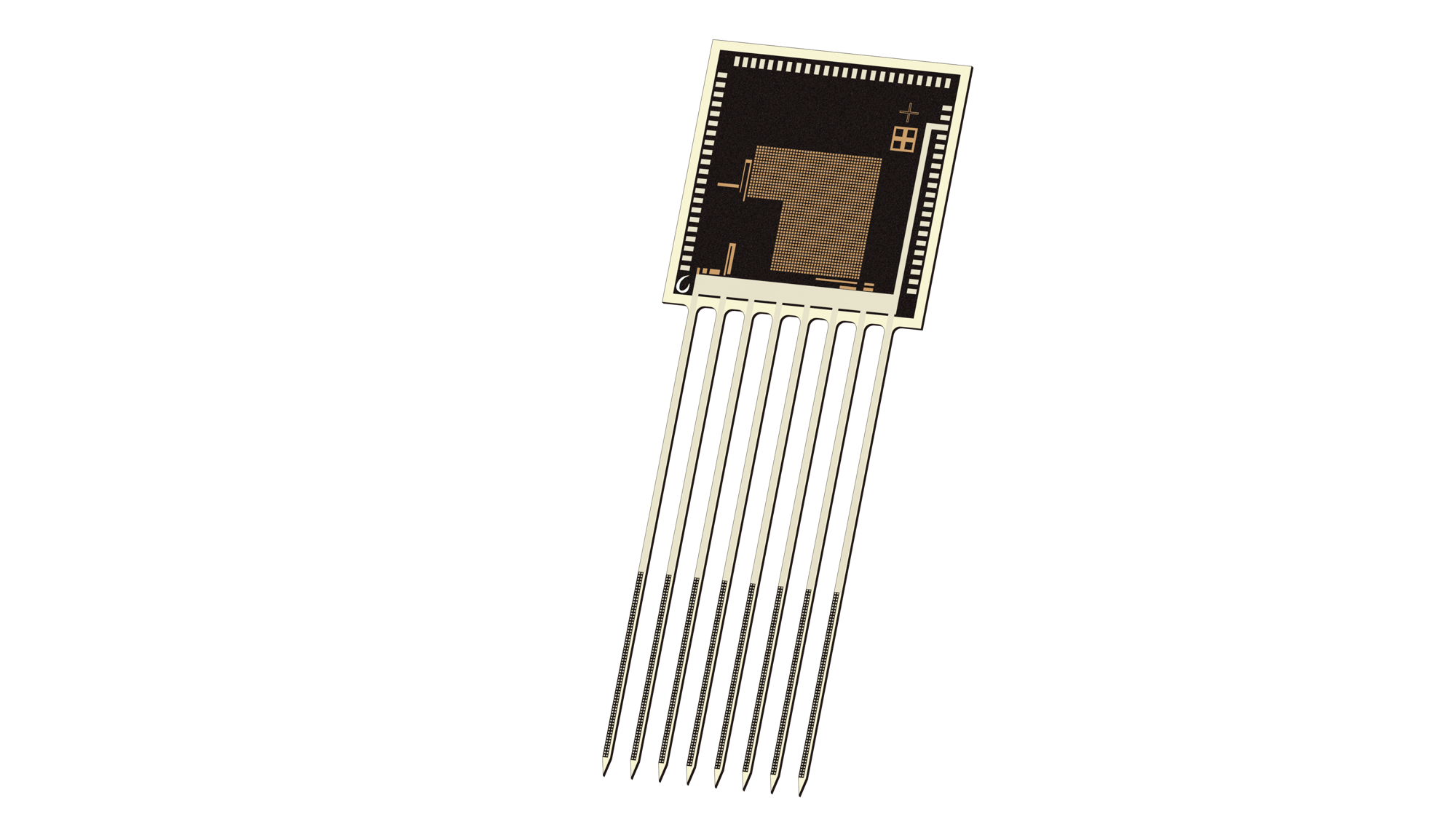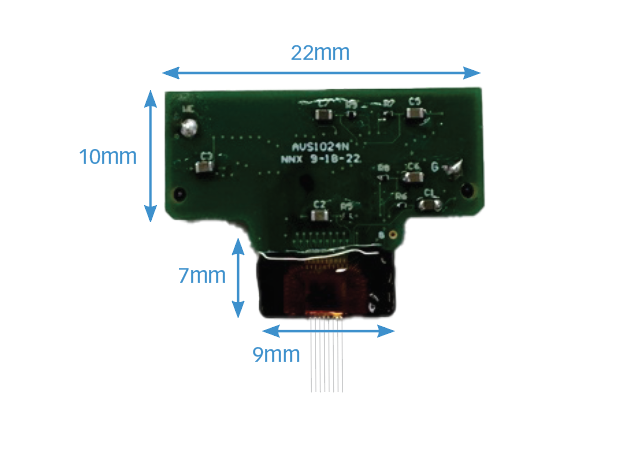
SiNAPS 8 Shank Microelectrode Arrays
With 1024 recording sites, these high channel count microelectrode arrays offer several unique benefits in electrophysiology and neuroscience research.

Explore the Unique Benefits
- High Spatial Resolution: With multiple shanks, each containing a high number of recording sites (128 channels), these arrays enable researchers to simultaneously record from multiple brain regions with high spatial resolution. This is particularly useful for studying complex neural circuits and understanding how different brain regions interact.
- Increased Coverage: The multiple shanks allow for increased coverage of brain regions compared to single-shank arrays. This is crucial for capturing activity across larger brain areas or distributed neural networks like hippocampus
- Enhanced Sampling: By recording from multiple sites simultaneously, these arrays provide a more comprehensive sampling of neuronal activity within a region of interest. This can improve the statistical robustness of findings and provide a more detailed understanding of neural dynamics.
- Multi-modal Recording: Some high channel count arrays are designed to integrate multiple recording modalities, such as extracellular spikes, local field potentials (LFPs), and even optogenetic stimulation. This enables researchers to simultaneously investigate different aspects of neural activity and their relationships.
- Longitudinal Studies: The ability to record from multiple sites over extended periods allows for longitudinal studies, tracking changes in neural activity patterns over time. This is valuable for investigating neural plasticity, development, and the progression of neurological disorders.
- Efficient Data Acquisition: Recording from numerous channels in parallel reduces the time required to collect data compared to sequential recordings from single electrodes. This efficiency is especially advantageous when studying dynamic processes or conducting large-scale experiments.
- Insights into Network Dynamics: By capturing activity from multiple sites simultaneously, these arrays facilitate the study of coordinated neural activity patterns and network dynamics. This is essential for unraveling the complex interactions underlying cognitive processes, behavior, and disease states.
Probe Package, Dimensions, & Specs
RMS noise: 6.5μv (300-7500 Hz)
In-pixel amplifier: (46 dB (DC-4 kHz)
Power consumption: <6μW/electrode pixel
Sampling frequency: 20 k sample/s
Electrode Size: 14x14μm^2
Electrode/Channels: 1024
Electrode pitch: 29μm
Shank spacing: (center-to-center) 300±2μm
Electrode material: Platinum
Shank length: 5656 ± 60μm; active length: 1924 ± 1μm
Shank width: 88 ± 2μm
Shank thickness: 50 ± 5μm

